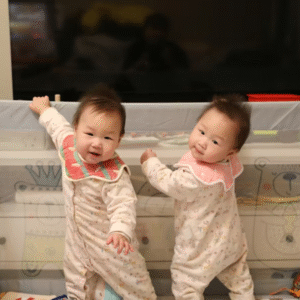It was a typical weekend afternoon when I took my child to our local Target for some shopping. As we approached the entrance, my child, like many others, was drawn to the large, inviting red spheres that adorn the front of the store. These spheres, seemingly harmless and decorative, have always been a source of fascination for children. However, this time, as my child began to climb on one of them, a man passing by suddenly yelled, expressing his disapproval. I was taken aback, both by his reaction and my own uncertainty about whether my child was in the wrong. This incident left me wondering: what exactly are these big red spheres for, and why did it provoke such a strong reaction from a stranger?
Understanding the Big Red Spheres
The big red spheres, officially known as bollards, are a common sight at the entrance of Target stores across the country. While they might appear to be mere decorative elements, their primary function is far more practical. These spheres are strategically placed to prevent vehicles from driving too close to the store entrance, thereby ensuring the safety of pedestrians. Their bright red color and substantial size make them both a visual statement and a physical barrier. However, their inviting appearance often leads to a misunderstanding of their purpose, especially among children who see them as fun objects to climb and play on.
Advertisement
The Purpose of Target’s Red Spheres
Target’s red spheres serve a dual purpose. First and foremost, they are a safety measure designed to protect shoppers by preventing cars from accidentally or intentionally driving onto the pedestrian walkway. In addition to their safety function, these spheres also contribute to Target’s brand identity. The bold red color is synonymous with Target’s branding, making the spheres an iconic part of the store’s exterior design. Their presence is meant to create a visually appealing and recognizable entrance that aligns with the store’s overall aesthetic.
Safety Concerns and Public Perception
While the primary purpose of the red spheres is safety, they inadvertently become a source of concern when children climb on them. The potential for falls or accidents is a valid worry for parents and passersby alike. The man who yelled at my child likely did so out of concern for safety, though his approach was less than ideal. Public perception of these spheres varies; some see them as harmless fun for kids, while others view them strictly as safety devices that should not be tampered with. This divergence in perception can lead to conflicts, as seen in my experience.
Parental Reactions and Public Etiquette
As a parent, my immediate reaction was a mix of embarrassment and defensiveness. It’s natural to want to protect your child, both physically and emotionally, from perceived threats or criticisms. However, this incident also highlighted the importance of understanding public etiquette and the need for clear communication. While the man’s reaction was abrupt, it served as a reminder that public spaces are shared environments where safety and respect for others should be prioritized. Parents can use such moments as teaching opportunities to discuss the importance of respecting public property and understanding its intended use.
Exploring the Role of Public Art and Decor
The red spheres at Target, while primarily functional, also contribute to the broader conversation about public art and decor. They exemplify how functional objects can be designed to enhance the visual appeal of a space. In many urban environments, public art serves to enrich the community’s cultural landscape, providing both aesthetic value and a sense of identity. The challenge lies in balancing these artistic elements with their practical purposes, ensuring that they are both safe and engaging for the public.
Advertisement
Conclusion: Balancing Safety and Aesthetics
The incident outside Target was a learning experience that underscored the need to balance safety with aesthetics in public spaces. While the red spheres are primarily there for protection, their design invites interaction, especially from children. As parents and community members, it’s important to educate ourselves and our children about the intended use of such structures while advocating for designs that consider both safety and engagement. By fostering a better understanding of these elements, we can create public spaces that are both safe and enjoyable for everyone.





